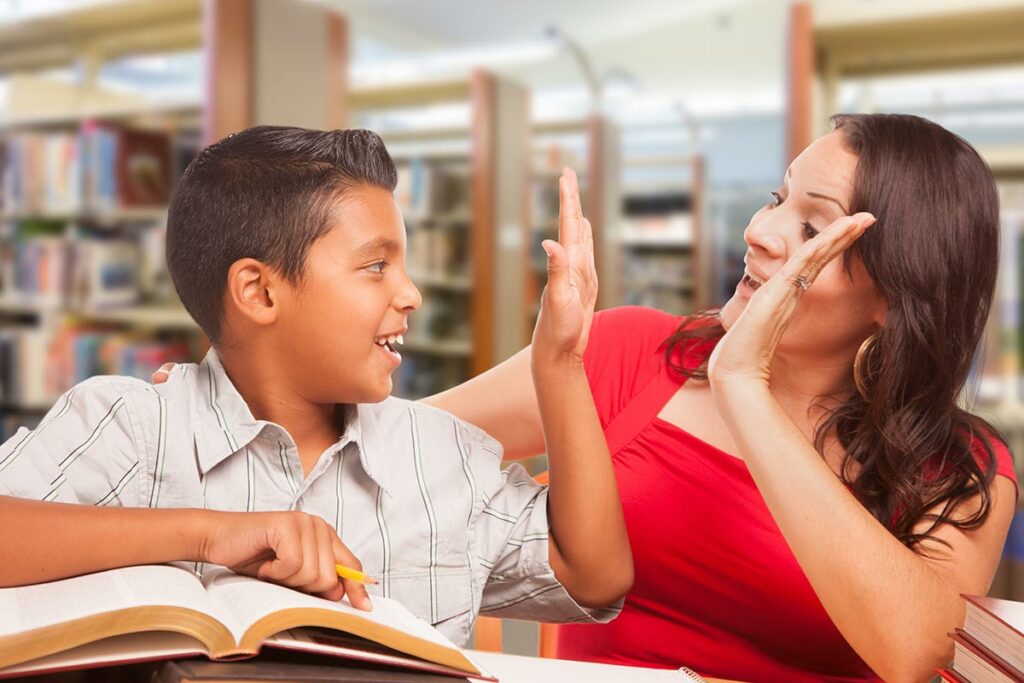Experts say teaching is more than just delivering information to students. It’s about building relationships with them, inspiring them, and helping them learn in ways that are meaningful to them. But how do you make these connections with your students? Here are some tips on how teachers can build strong and lasting relationships with their students.

Take An Interest In Their Lives Outside The Classroom
One of the best ways for teachers to connect with their students is to take an interest in their lives outside the classroom. Ask questions about their hobbies, interests, and activities outside of school. Taking time to get to know your students as individuals helps foster a positive relationship between you and your class and a connection between each student and the material you are teaching.
Encourage Student Engagement
It is essential to create an atmosphere of open communication in the classroom so that students will feel free to participate in discussions and ask questions without feeling judged or embarrassed. To promote this kind of environment, acknowledge student contributions verbally, provide positive reinforcement for correct answers, and offer constructive criticism for incorrect responses. You can also set ground rules at the beginning of each semester, such as no cell phones during class time or no put-downs when critiquing another student’s work. These rules should be enforced consistently throughout the term so that all students understand what behavior is expected of them in your classroom.
Make Use of Technology
Technology provides a plethora of tools to help facilitate connections between teachers and students. For example, you can use online resources such as discussion boards or video conferencing software to keep track of student progress and provide feedback on assignments quickly. Social media platforms such as Twitter and Instagram can also be used as an effective way to communicate with your students if they are more comfortable using these mediums than traditional methods like email or face-to-face meetings. Additionally, you can use technology-based classroom activities like scavenger hunts or mystery skits which will help increase engagement levels among your students while also providing them with a fun learning experience.
Create Clear Expectations
For teachers and students to connect successfully, there must first be mutual respect. Make sure your expectations are clear from day one by communicating precisely what behavior is expected from all parties involved. Let your students know you value their input but expect them to take responsibility for their actions by adhering to assignment deadlines and participating actively during class meetings. This will ensure that everyone understands their role within the learning environment, making it easier for everyone to collaborate effectively toward common goals.
Create A Fun And Engaging Learning Environment
Creating an engaging learning environment can help teachers build strong relationships with their students. Incorporating fun activities into lessons can keep the students interested and engaged while also making learning enjoyable. Find creative ways to make lessons entertaining by incorporating games or activities that get everyone involved. This will help create a positive atmosphere where everyone feels comfortable participating and asking questions.
Encourage Collaboration And Student-Led Learning
Collaborative learning is an excellent way for teachers to foster relationships with their students because it encourages peer interaction while giving each student ownership of their learning process. Assign group projects or tasks that require collaboration among the members for them to complete the task successfully. This helps build relationships and allows students to develop problem-solving skills, which is essential for success in the classroom and beyond.
Be Open To Different Perspectives And Ideas From Your Students
When building relationships with your students, it’s essential for teachers to be open-minded about different perspectives or ideas from their pupils. Encouraging dialogue during class discussions allows students to voice their opinions without fear of judgment or criticism from classmates or instructors. This creates an atmosphere of trust and respect between teacher and student, which can lead to stronger bonds between both parties over time.
When To Seek Professional Help
Sometimes, despite our best efforts to build strong relationships with students, connecting can take time. If you find yourself in such a situation, don’t hesitate to contact a mental health professional who can provide guidance and support on effectively building relationships with your students. They may even be able to offer valuable strategies to help you better understand and work with your students.
Conclusion
Building relationships with your students is critical in creating a thriving learning environment where everyone feels comfortable expressing themselves without fear of judgment or criticism from others. Take an interest in their lives outside the classroom, create fun activities that engage everyone involved, encourage collaboration among peers, and be open-minded when it comes to different perspectives or ideas from your pupils—these are just some of the ways teachers can build lasting connections with their students that not only strengthen classroom dynamics but prepare young minds for success beyond graduation day as well!



